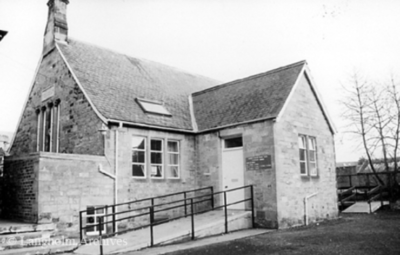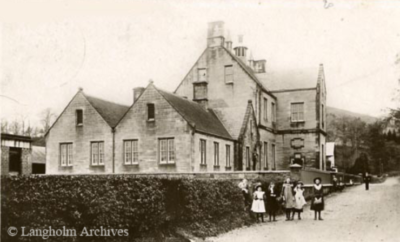Langholm had an ‘infant school’ (ages … to seven) and an ‘academy’ (ages eight to fifteen). For subsequent education, children would typically go to Dumfries, a few with the assistance of bursaries from the Hannahfield Foundation.

Langholm Academy had Classes I to VI, a Supplementary Class and a Higher Grade. The smaller section at the front in the photo below was built in 1854 and the larger section behind was added in 1894.

In February 1915, there were a total of 479 pupils enrolled in the Infant School and Academy.
Both schools were under the control of the Langholm School Board. The president was Arthur Bell, woollen manufacturer. Other board members were Thomas Moses, tweed designer; James Harkness, retired coal agent; … Maxwell, …; and Robert Ramage, painter.

The School Board structure in Scotland was initiated by the Education (Scotland) Act 1872, which in Langholm resulted in the amalgamation of the Parish School, the Free Church School (also known as the Broomholm School in Drove Road), and the Infant School in 1876. The newly-constituted Academy’s first rector was John Howie, born in Ayrshire, who died in 1908 and was succeeded by Robert Hamilton.
The 1872 Act made education compulsory for all children between the ages of five and 13 in Scotland and enforced a unified system. The English equivalent in 1870 was less prescriptive and took up to a decade longer to implement in some areas.
Evening continuation classes were offered at the Academy and in 1915 covered needlework, cookery and shorthand. There was insufficient demand for other subjects offered: English, arithmetic, laundry, dressmaking, physical exercises and ambulance work.